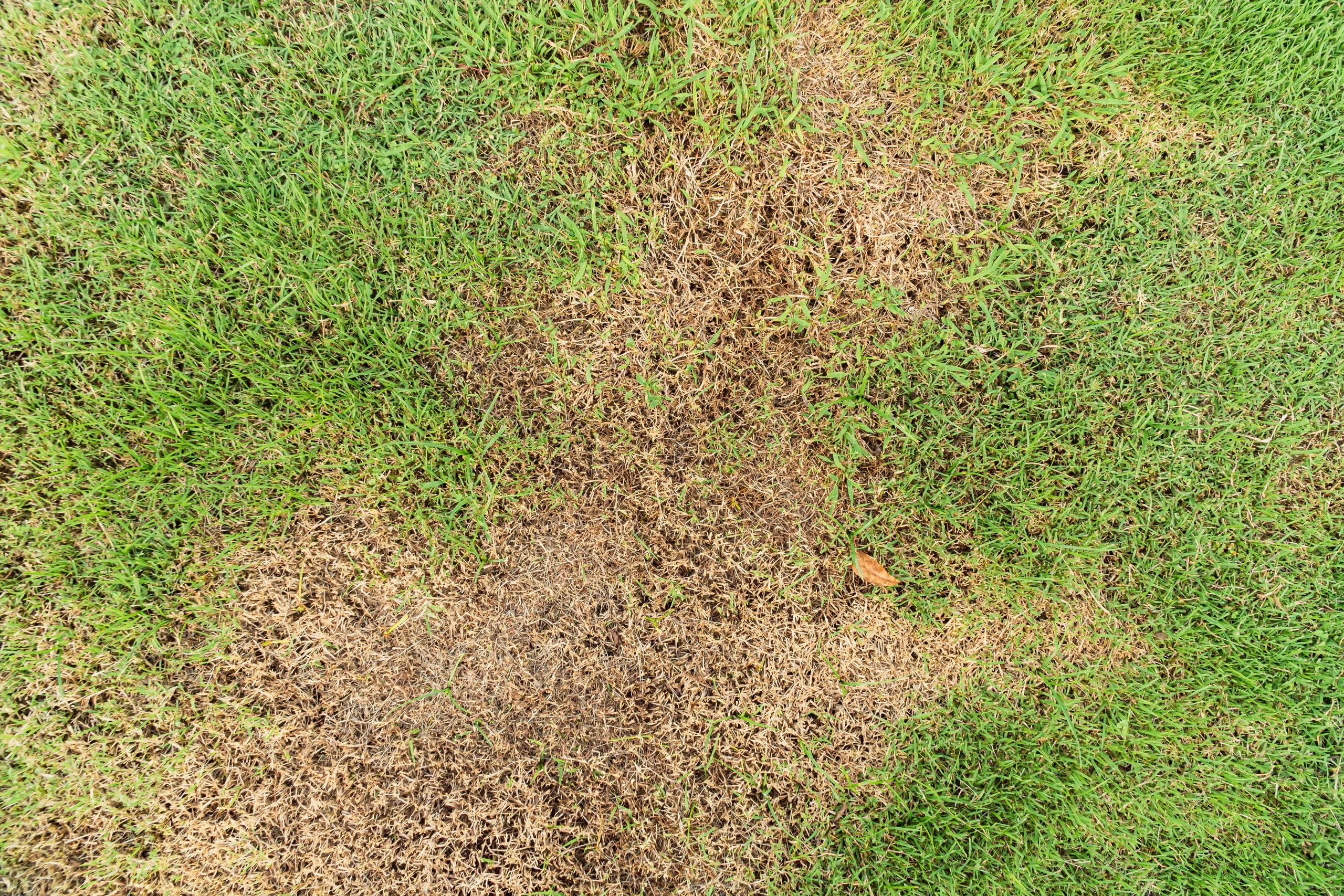Preventing Large Patch Disease: Tips for Centipede, Zoysia and St. Augustine Lawns
With the start of fall, protecting your grass from disease becomes crucial yet challenging. Warm-season grasses like Centipede, Zoysia and St. Augustine are especially vulnerable to large patch disease—which can cause discolored grass, thinning blades, root damage and even turf death through spring. Discover how large patch fungus develops, its key symptoms and management tips to keep your lawn healthy.
Why Are These Turfgrasses Most Susceptible to Large Patch Disease?
The start of cooler temperatures and rising moisture levels create ideal conditions for disease growth. At the same, warm-season grasses are entering dormancy, making them particularly vulnerable. Plus, each of these three grass types has traits that increase its risk.
Centipede
While low-maintenance, Centipede grass has a slow growth rate and shallow root system, making it more prone to fungal infections.
Zoysia
Zoysia grass retains a lot of moisture due to its dense growth, creating an environment where patch fungi can thrive.
St. Augustine
St. Augustine grass is highly sensitive to cooler temperatures and moisture, making it a main target of large patch disease.
Ideal Soil Conditions for Large Patch Disease Development
Several factors contribute to the development and spread of large patch disease. While these conditions cannot be completely eliminated, proper lawn maintenance can enhance your lawn’s defenses:
- Soil Temperature: Large patch disease usually activates when soil temperatures reach 75-80°F for St. Augustine and Centipede grass and 70-75°F for Zoysia grass. Fluctuating temperatures can then worsen the infection and increase its spread.
- Soil pH Levels: Imbalanced soil pH weakens your lawn’s defenses, increasing vulnerability to fungal infections.
- Soil Moisture: Excess moisture in soil—whether from high humidity, heavy rainfall or overwatering—is ideal for fungal growth.
- Soil Density: Compact, poorly draining soil also traps excess moisture.
Symptoms of Large Patch Disease
Large patch disease symptoms usually start to appear in cool, wet weather and become more noticeable as your grass greens in spring.
Early Symptoms
Initially, you may notice individual blades becoming discolored, with yellowing or thinning grass forming small patches (sometimes surrounded by orange rings). Without treatment, these patches can worsen, severely affecting your lawn’s appearance and quality.
Progressive Symptoms

As the disease advances, small patches can expand into large, irregular areas of dead or dying grass, reaching several feet in size.
Stay ahead of any lawn issues by scheduling a free consultation with a lawn care expert.
Best Management Tips for Preventing Large Patch Disease
Effectively completing these lawn care practices can make a big difference:
- Fertilization: Avoid misusing nitrogen-based fertilizers, as they can make your lawn more prone to fungal infections. Our team can design a fertilizer plan tailored to your specific grass type for optimal results.
- Drainage: If your lawn is excessively wet or mushy, our irrigation experts can evaluate and improve its drainage patterns.
- Aeration: Aeration reduces soil compaction, removes thatch and improves drainage, creating an environment less ideal for disease.
- Watering: Be consistent with your watering practices and avoid overwatering all at once, as this stresses your grass and promotes disease.
- Mowing: Maintain a mowing height between 2-2.5 inches to prevent unnecessary stress on your grass.
How Chemical Control Can Help Manage Large Patch Disease
Along with cultural controls, fungicide treatments can help halt large patch disease. To ensure success:
- Select the right product: Choose a fungicide formulated for your specific lawn type—whether it’s Centipede, Zoysia or St. Augustine grass.
- Apply effectively: Fungicides for large patch disease are most effective when applied early, following the manufacturer’s instructions and before symptoms worsen. Our experience suggests that products designed for two applications typically yield the best results.
Protect Your Lawn From Large Patch Disease With Barefoot Lawn Care
Preventing and managing large patch disease requires a proactive approach, which can be time-consuming. With Barefoot Lawn Care, you can rely on our experts to combine maintenance and fungicide control to keep your lawn healthy. Contact us today for a free lawn estimate and keep your lawn vibrant and resilient for spring!